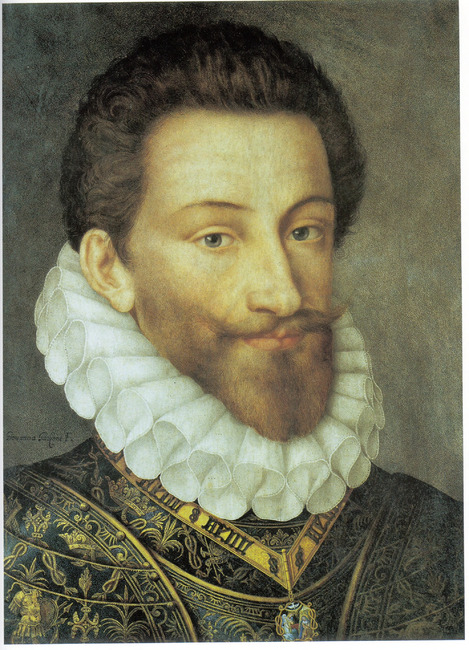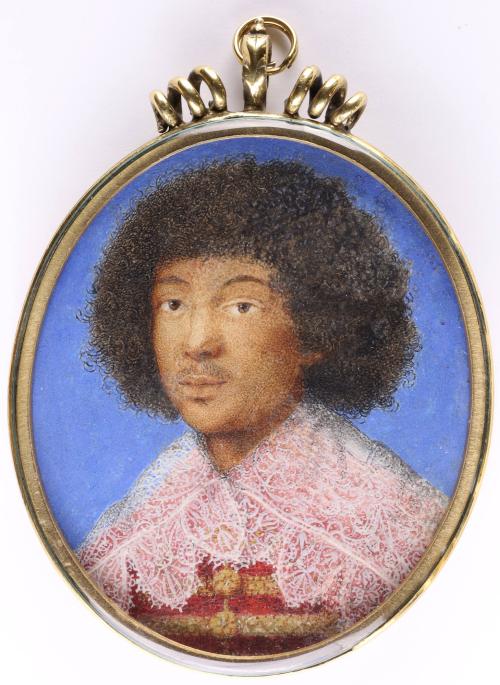Giovanna Garzoni
Active in: Italy, France, England
Biography
An accomplished artist who worked in diverse media, Giovanna Garzoni was born in Ascoli Piceno around 1600. There are few surviving documents about her early life and training, but she belonged to a minor aristocratic family and likely began to study painting with her uncle, Pietro Gaia, in Venice. Garzoni first visited the Medici court in Florence between 1618 and 1620, where she met Artemisia Gentileschi (1593–1653). She returned to Venice in 1620 and completed a commissioned work for the Church of the Ospedale degli Incurabili. She became well-known for her paintings that centered religious, mythological, and allegorical subjects in this early phase of her career, but after studying calligraphy with Giacomo Rogni–an artist about whom little else is known–she made a book of letters illustrated with birds, flowers, and insects. This Libro de'caratteri Cancellereschi Corsivi was an early example of the botanical and still-life subjects for which she would become best-known. Around this time, she is thought to have the Venetian portraitist Tiberio Tinelli (1586–1639) in 1622, but if so, the marriage was dissolved by 1624.
In 1630, she left Venice for Naples, where she accepted commissions from the Spanish viceroy, the Duke of Alcalá. She traveled to Rome in 1631 before settling in Turin, where she lived from 1632 to 1637. She continued to travel, living briefly in Paris before returning to Rome in 1642. Until 1651, she traveled between Florence and Rome, having cultivated contacts at the Medici court, before settling permanently in Rome, where she lived until her death in 1670. Over the course of these decades, she made botanical illustrations, still-life paintings, and portraits, working in oils, gouache, textiles, pen and ink, and various other media. In 1635, she made the earliest known European portrait miniature of a Black sitter, her Portrait of Zaga Christ, now in the collection of the Allen Memorial Art Museum at Oberlin College. On the reverse, Garzoni’s Italian name appears in Latin script and transliterated into Amharic.
In 1646, Garzoni completed a fourteen-foot-long altar cloth for Santa Maria Novella in Florence, rendered in silk and taffeta and depicting a scene from Genesis, with God the Father surrounded in a complex floral design. While in Rome after 1651, Garzoni developed close ties to the Accademia di San Luca. She died in February 1670, and, per her last testament, she left her entire estate to the Accademia, which in turn had granted her membership.
Selected Works

Giovanna Garzoni, Antependium, 1646. Taffeta surface mounted with silk applications, attached with starch paste, 102 x 432 cm. Museo di Santa Maria Novella, Florence.
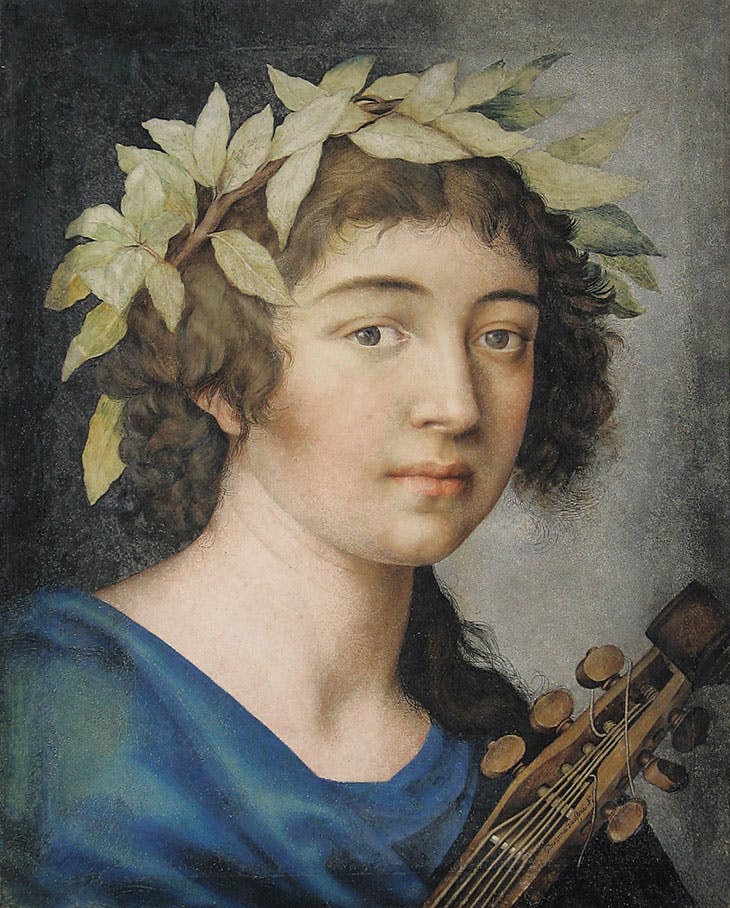
Giovanna Garzoni, Self-Portrait as Apollo, ca. 1618– 1620. Tempera on parchment, laid down on linen, 42 x 33 cm. Segretariato Generale della Repubblica, Palazzo del Quirinale, Rome.

Giovanna Garzoni, Portrait of Infanta Catalina Micaela, Duchess of Savoy, 1632–37. Tempera on parchment. Galleria degli Uffizi, Florence.
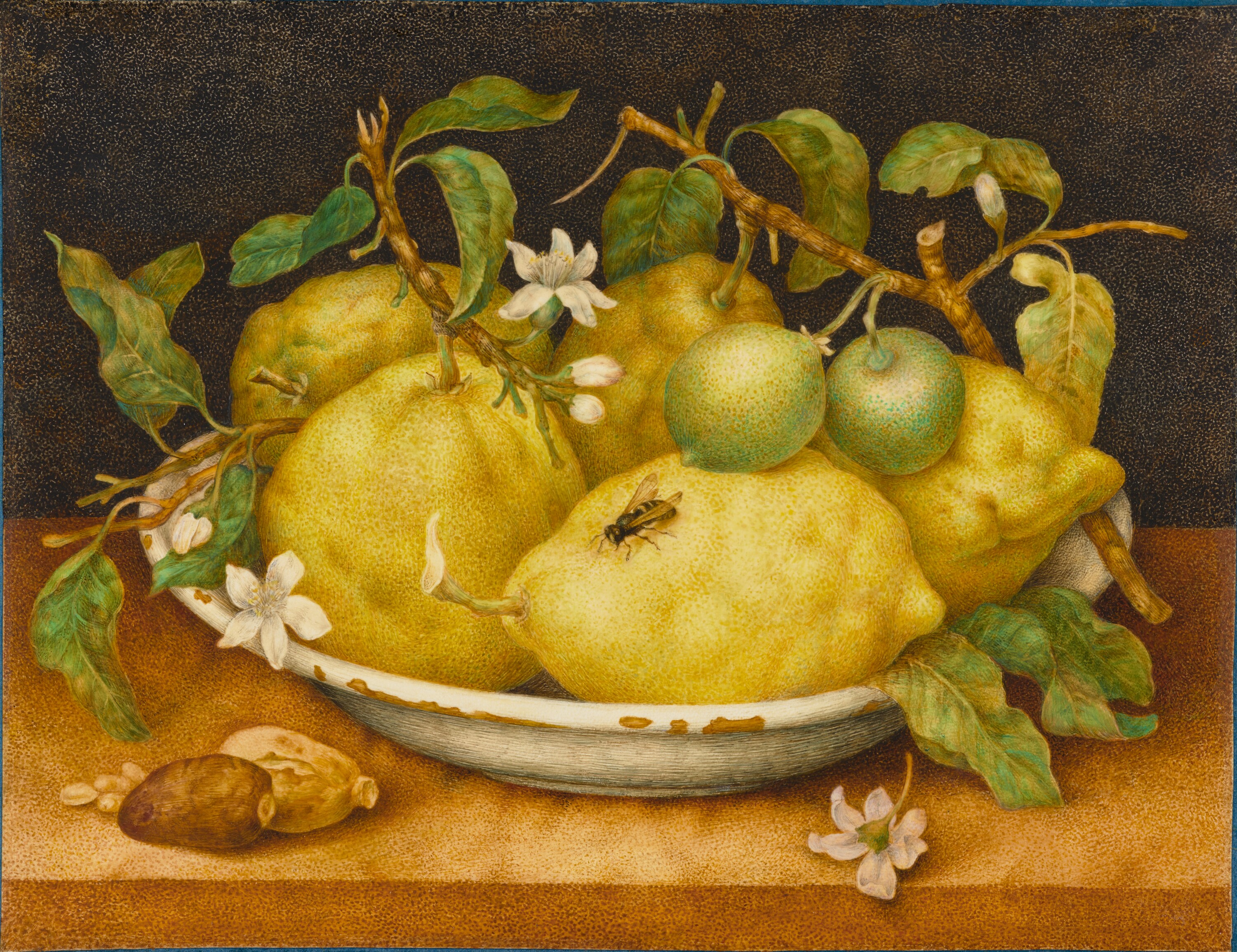
Giovanna Garzoni, Still Life with Bowl of Citrons, late 1640s. Tempera on vellum, 27.6 x 35.6 cm. Getty Museum.
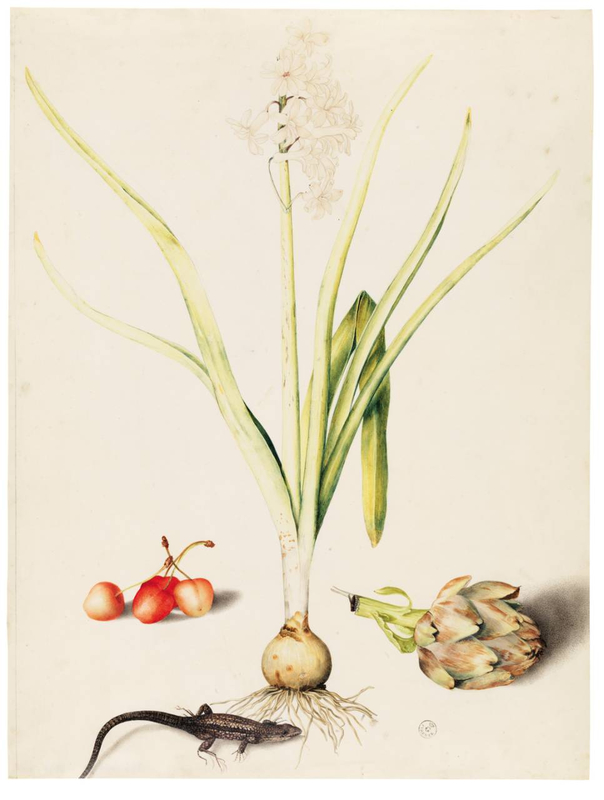
Giovanna Garzoni, Hyacinth with Four Cherries, a Lizard and an Artichoke, ca. 1648. Tempera and traces of black pencil on parchment, 53.2 x 40.1 cm. Galleria degli Uffizi, Florence.
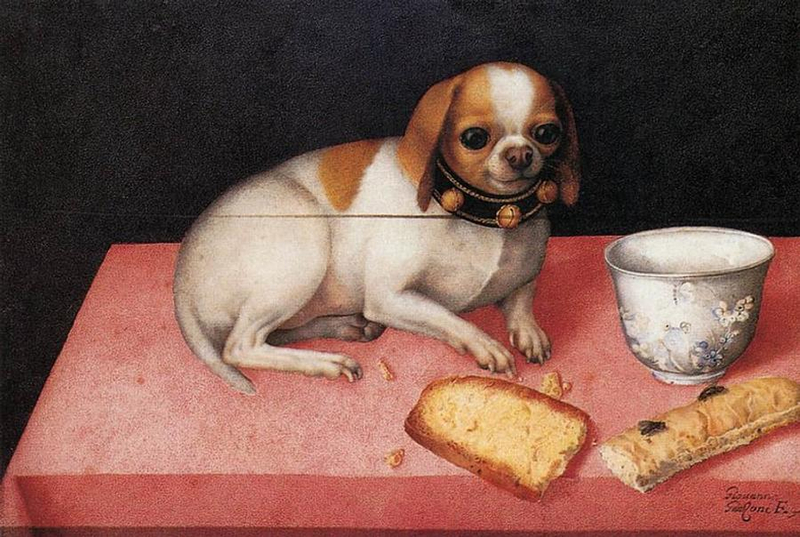
Giovanna Garzoni, Lapdog with Biscotti and a Chinese Cup, ca. 1648. Tempera on parchment, 27.5 x 39.5 cm. Galleria degli Uffizi, Florence.

Giovanna Garzoni, Musa, fol. 8 of Piante varie, ca. 1630-32. Watercolor on paper, 49.5 x 38 cm. Dumbarton Oaks Research Library, Washington, DC.
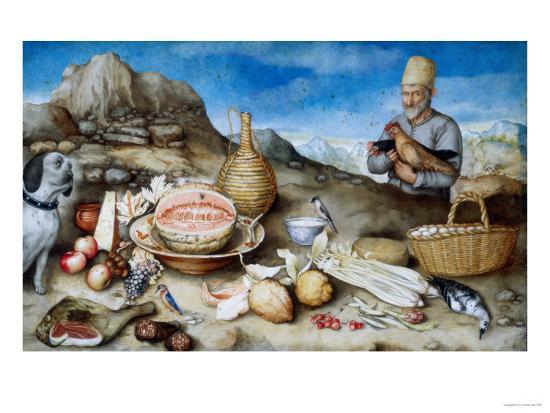
Giovanna Garzoni, The Old Man of Artimino, ca. 1648. Tempera on parchment, 38.2 x 60 cm. Galleria degli Uffizi, Florence.
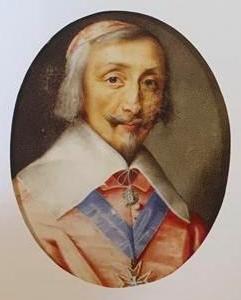
Giovanna Garzoni, Cardinal Richelieu, 164048. Tempera on parchment, 7.1 x 5.9 cm. Galleria degli Uffizi, Florence.
Circle
Friend of
Artemisia Gentileschi
Wife? of
Tiberio Tinelli (1586–1639)
Student of
Giacomo Rogni
Bibliography
Barker, Sheila ed. ‘The Immensity of the Universe’ in the Art of Giovanna Garzoni. Livorno: Sillabe, 2020.
Baudi di Vesme, Alessandro. “L’arte negli Stati Sabaudi dai manoscritti del Conte Alessandro Baudi di Vesme.” Atti della Società Piemontese di Archeologia e Belle Arti 14 (1932): 798-802.
Bottacin, Francesca. “Giovanna Garzoni pittrice di ritratti ‘amorevoli.’ Una proposta per il soggiorno veneziano.” In Donne a Venezia. Vicende femminili fra Trecento e Settecento, edited by Susanne Winter, 71-83. Venice: Edizioni di Storia e Letteratura, 2004.
Casale, Gerardo, ed. Giovanna Garzoni “Insigne miniatrice” 1600-1670. Milan and Rome: Jandi Sapi Editori, 1991.
Casale, Gerardo, ed. Gli incanti dell’iride: Giovanna Garzoni pittrice nel Seicento. Cinisello Balsamo: Silvana, 1996.
Fortunati, Vera, Jordano Pomeroy, and Claudio Strinati, eds. Italian Women Artists from Renaissance to Baroque. Washington DC: National Museum of Women in the Arts, 2009.
Fortune, Jane, with Linda Falcone. Invisible Women: Forgotten Artists of Florence. Florence: Florentine Press, 2010.
Fumagalli, Elena. In Il Seicento fiorentino. Arte a Firenze da Ferdinando I a Cosimo III. Florence: Cantini, 1986.
Fumagalli, Elena. “Giovanna Garzoni.” In La natura morta in Italia, edited by Francesco Porzio, 568-71. Milan: Electa, 1989.
Greer, Germaine. The Obstacle Race: The Fortunes of Women Painters and Their Work. New York: Farrar, Straus, Giroux, 1979.
Griseri, Andreina. “Ritratti sabaudi di Giovanna Garzoni.” Studi Piemontesi 14 (1985): 355-57.
Meloni Trkulja, Silvia ed. Giovanna Garzoni. Nature morte / Natualezas Muertas / Stillevens. Paris: Bibliothèque de l’Image, 2000.
Mongan, Agnes. “A Fête of Flowers: Women Artist’s Contribution to Botanical Illustration.” Apollo 119 (1984): 264-67.
Parker, Rozsika and Griselda Pollock. Old Mistresses: Women, Art and Ideology. London: Routledge & Kegan Paul, 1981.
Pettenati, Silvana. In Diana trionfatrice. Arte di corte nel Piemonte del Seicento, edited by Michela di Macco and Giovanni Romano. Turin: Umberto Allemandi, 1989.
Rovere, Clemente. Descrizione del Reale Palazzo di Torino. Turin: Tipografia Eredi Botta, 1858.
Salerno, Luigi. Natura morta italiana. Tre secoli di natura morta italiana. La raccolta Silvano Lordi / Italienische Stillebenmalerei aus drei Jahrhunderten. Sammlung Silvano Lodi / Italian Still Life Painting from Three Centuries. The Silvano Lodi Collection. Florence: Centro Di, 1984.
Stilleben in Europa. Münster: Aschendaff, 1979.
Tongiorgi Tomasi, Lucia. “Fiori, giardinieri, naturalisti e artisti a Roma nella prima metà del Seicento.” In Scritti e immagini in onore di Corrado Maltese, edited by Stefano Marconi, 183-89. Rome: Edizione Quasar, 1997.
Tongiorgi Tomasi, Lucia, and Gretchen A. Hirschauer. The Flowering of Florence: Botanical Art for the Medici. Washington, DC: National Gallery of Art, 2002.
Entry Notes
For Letty Newkirk, whose warmth and talent for bringing people together has enriched the lives of her friends and added many new supporters to the museum, I dedicate this entry on Giovanna Garzoni, who during her career found friends and admirers wherever she went.—Heidi Gealt
